Join us for this week’s Rocket Roundup with host Annie Wilson as we look back at the launches that happened over the last week, including Yet Another Starlink and a surprise Chinese launch. Plus, updates on all those arriving Mars missions.
Media
Transcript
Hello, and welcome to the Daily Space. My name is Annie Wilson and most weekdays the CosmoQuest team is here putting science in your brain.
Today, however, is for Rocket Roundup. Let’s get to it, shall we?
Our first rocket launch of the week was by SpaceX. On February 4th at 06:19 UTC, a Falcon 9 with yet another batch of Starlink satellites took off from SLC-40 at the Cape Canaveral Space Force Station in Florida. This was the 18th launch of the version 1.0 satellites.
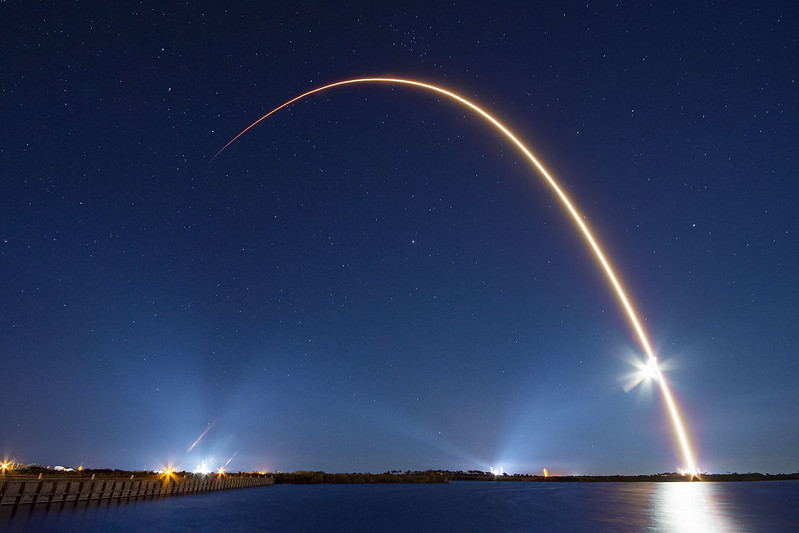
The launch was originally scheduled for late January but was delayed several days to February 4th due to poor weather at the booster recovery zone. This is nothing new; Falcon 9 launches have been delayed in favor of booster recovery in the past. Boosters are expensive, and SpaceX really wants to get their money’s worth.
Speaking of reusing boosters, this launch featured the fifth launch of booster 1060 just 28 days after its previous launch, which was on January 8th. This was the fastest turnaround yet, beating the previous turnaround record of 37 days between Booster 1051’s seventh and eighth flights on SXM-7 and Starlink Mission 16. This is excellent progress towards SpaceX’s stated goal of a 24-hour turnaround for the Falcon 9.
For those of you keeping score at home: eight minutes after launch, 1060 successfully landed on the drone ship Of Course I Still Love You. Both of the fairings had previously flown. According to SpaceX, one flew on the GPS III SV03 mission, the other SAOCOM-1B, both were successfully retrieved from the water.
This was a dedicated mission so another sixty satellites were added to the mega-constellation, bringing the total number of version 1.0 satellites launched to 1,023 of a planned 1,440 in the first phase of the constellation. So far, that’s roughly 71% of the first shell filled.
Those 1,023 satellites do not include satellites from the very first launch in May 2019. SpaceX called those 60 satellites “version 0.9” and as of January 2021, only six are still operational. Several version 1.0 satellites have also been deorbited, either intentionally or as a result of losing control and being dragged back into the atmosphere uncontrollably.
Jonathan McDowell, an astrophysicist who also monitors satellites in orbit in his spare time (when he’s not working on Chandra), reports that as of late January 2021, fourteen version 1.0 satellites have been intentionally deorbited or had their orbit decayed uncontrollably. A further seventeen of the version 1.0 satellites are not raising their orbits.
Future phases of the constellation will lead to a total of over ten thousand spacecraft. The next phase of 1,228 will be inserted between five and six hundred kilometers at either 70- or 97.6-degree inclinations. SpaceX has further approval to launch 7,518 additional Starlinks to orbits between 335 and 345 kilometers and inclinations of 42, 48, and 53 degrees. SpaceX has asked for but has yet not received permission for an additional 30,000 satellites to add to the constellation.
These additional shells of Starlink satellites will use V-Band transponders unlike the Ka/Ku transponders of the first 1440. V-Band is a higher frequency than Ka/Ku which will allow for more bandwidth and greater throughput. It’s also an unlicensed band over most of its frequencies in most countries around the world, and these two things alone have made it a favorite in microwave line-of-sight communications, particularly for backhaul links where fiber isn’t an option to move a lot of data around.
Other than highly directional microwave links though, not a lot operates in this band, so there’s also not much interference to overcome, which is great for urban areas. However, the reason it’s not used much is that the band tends to be heavily absorbed by atmospheric oxygen and is also subject to rain fade (absorption by water, like when your satellite TV goes out when it’s raining). The oxygen absorption in these cases tends to act like sound-proofing, which muffles the signal. This is why it’s mostly been used for line-of-sight radio links of two kilometers or less. More power can help overcome these losses, but it can get prohibitive.
Starlink will benefit from coming more or less straight down through the atmosphere in most cases rather than at an angle, but it still remains to be seen how well this band will work on the ground. If nothing else, it could easily replace the intra-satellite laser links if those prove to be a technological bridge too far. Even if ground-level service proves impractical, the band may also still prove useful for in-flight data links for aircraft operating at altitude.
Is your brain full of too much Starlink info yet? Astronomers worry about the sky getting too full of moving points of light, but that is a longer story for another day.
Our next launch is a surprise Chinese launch. At 15:36 UTC a Long March 3B launched from the Xichang launch site carrying the TJSW-6 satellite.
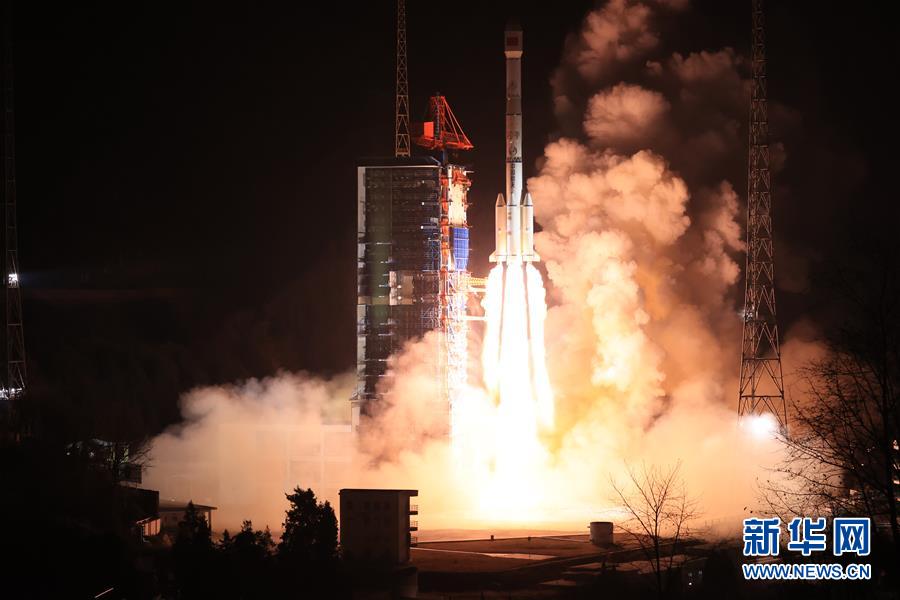
TJSW is a Chinese acronym meaning Tongxin Jishu Shiyan Weixing, which translates to Communications Technology Test Satellite. According to the China Aerospace Science and Technology Corporation, TJSW-6 will be “mainly used for satellite communications, radio and television, data transmission and other services, and carries out related technical test verifications.” Not much else is publicly known about the satellite.
Unusual for Chinese rocket launch campaigns, the rocket and spacecraft were transported by rail and road to the launch site because the usual method, an Antonov 124 cargo plane, was grounded due to an engine incident.
February is seeing three spacecraft arriving at Mars that have been en route since July 2020.

First up is Misabar Al’Amal from the United Arab Emirates. Also called the Hope Probe, it entered Mars’ gravitational sphere at 02:36 UTC on February 5th. Orbital insertion took place on February 9th, with a confirmation being received around 15:40 UTC. The maneuver involved a braking burn of around 27 minutes, which consumed roughly 400 kilograms of fuel.
Hope’s mission is to observe the Martian atmosphere, looking at how energy moves through all parts of the atmosphere at all times of the day and throughout the Martian year. It will look at things such as dust in the atmosphere, which plays a significant role in the temperature on Mars.
Hope will orbit Mars in a near-equatorial orbit between 22,000 and 44,000 kilometers.
The mission is being carried out by the Emiratis in collaboration with several American institutions who will be mentoring them, including the University of Colorado at Boulder; Arizona State University; and the University of California, Berkeley.
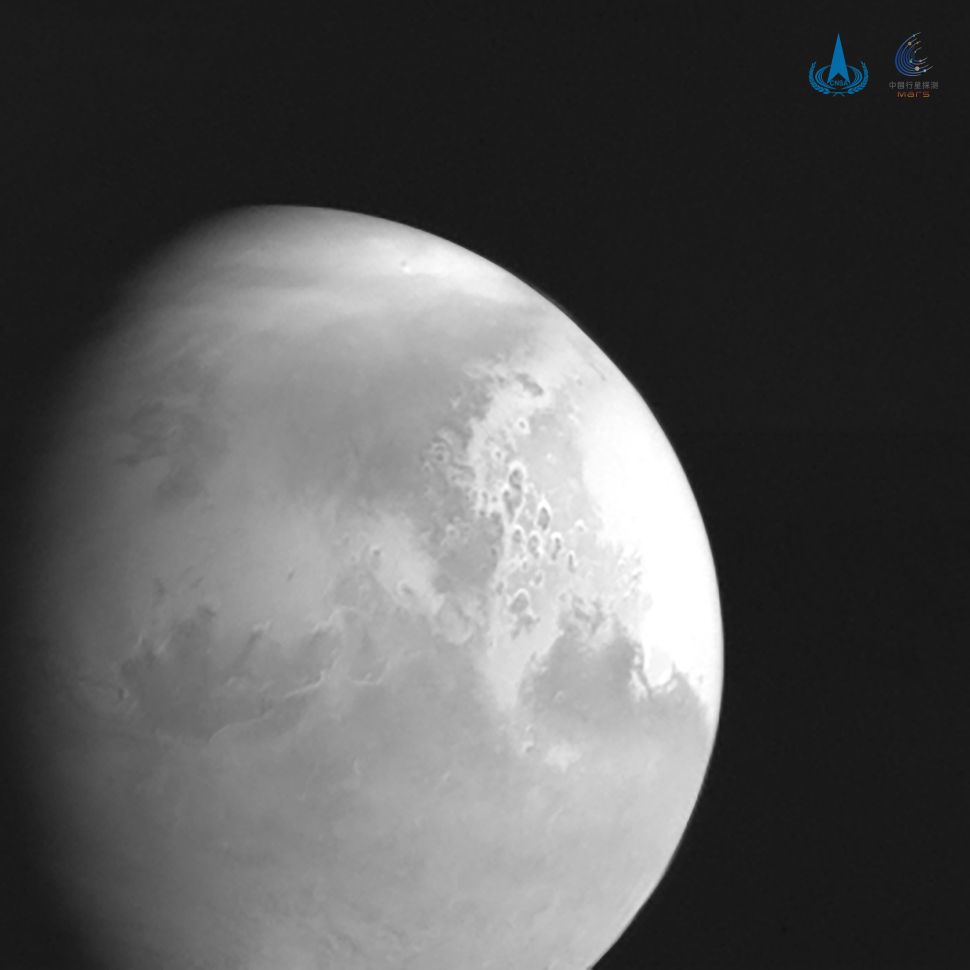
The next traveler arriving at Mars is China’s Tianwen-1, which entered Mars orbit at about 12:01 UTC earlier today, February 10th.
Tianwen, which translates to “Questions to Heaven”, was launched from the Wenchang Spaceport on Hainan Island last summer on July 23rd. Its mission has two major goals, the first of which is to deliver a six-wheeled rover to a flat plain within the Utopia impact basin just north of Mars’ equator. The rover will study the geology of the region at and just below the surface. The other major goal is to study the planet from orbit with seven remote sensing instruments.
The mission scientists are hoping to get at least 90 sols — that’s 90 Martian days — of service out of the robot, which looks similar to NASA’s Spirit and Opportunity vehicles.
The last spacecraft en route to Mars is NASA’s Perseverance, which was also launched on July 30th last summer. It will land in Jezero Crater next week on February 18th. Unlike Tianwen-1 which we just discussed, it will not stop in Martian orbit first. It will directly enter the Martian atmosphere from its interplanetary trajectory, just like Curiosity and the Mars Exploration Rovers.
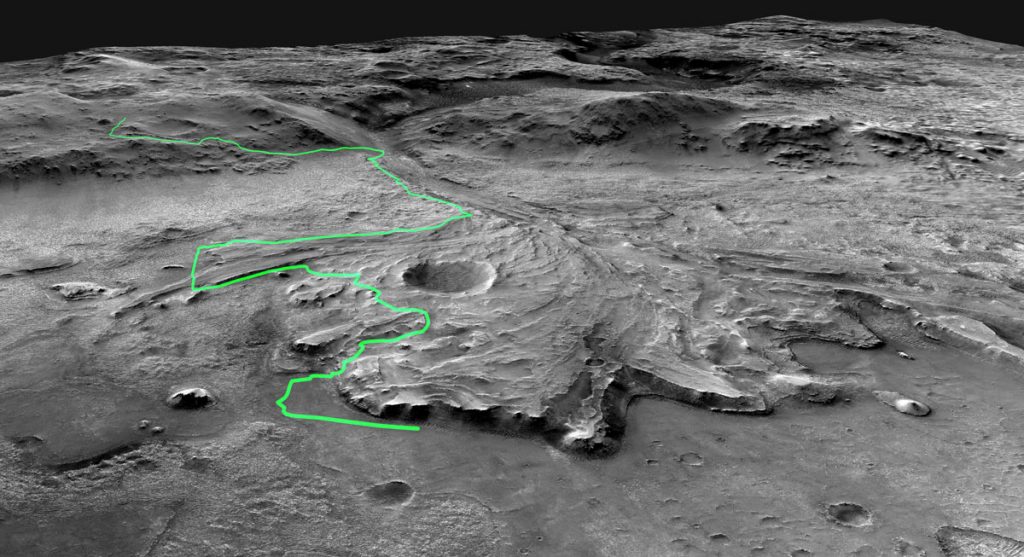
Perseverance’s main mission is to seek signs of ancient life and collect samples of rock and regolith (broken rock and soil) for a possible return to Earth, but it’s probably safe to say that the most exciting part of the mission is the technology demonstration payload known as Ingenuity.
NASA’s Ingenuity Mars Helicopter is the first aircraft to be sent to another planet to attempt powered, controlled flight. If its experimental flight test program succeeds, the data returned could benefit future explorations of the Red Planet – including those by astronauts – by adding the aerial dimension, which is not available today.
We’ll have more information about Perseverance and Ingenuity after they’re safely on the surface of Mars in about a week’s time. Good luck and safe travels to all the new arrivals at Mars from the team here at CosmoQuest!
This Week in Rocket History
A new segment here on Rocket Roundup is “This Week in Rocket History” where, as the name suggests, we’ll be covering interesting and/or significant rocket launches that took place roughly around this week in history.
Our first historical overview is of the Stardust mission, which launched on February 7th, 1999 from Cape Canaveral in Florida on a Delta II rocket and went straight into a heliocentric orbit after a 27-minute burn, taking it on a path around the sun for an Earth gravity assist later in 2,001.
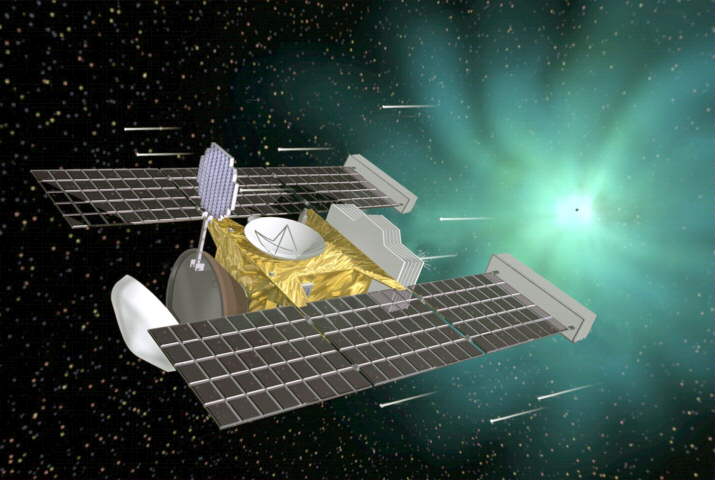
The sample return mission collected dust samples from the coma of comet 81P/Wild (also known as Wild 2) and returned them to Earth for study in 2006. This was the first-ever comet sample return mission. The sample collector used aerogel — a very low-density, gel-like, synthetic material — which would then trap and hold in place particles of dust as they flew into the capsule.
In 2002, the spacecraft flew by asteroid 5535 Annefrank on its way to its primary encounter with comet Wild 2 in early 2004. The 5535 Annefrank encounter was primarily used as an engineering test in preparation for the encounter with Wild 2.
The encounter with comet Wild 2 officially began on January 2nd, 2004, even though the sample collector was deployed a week earlier, on December 24th. Fifty-one days later, on February 21, the encounter officially ended. During this time the spacecraft made several engine burns that took it as close as 237 kilometers (147 miles) to the comet.
After the flyby, Stardust performed a maneuver that would allow it to encounter Earth again in early 2006. Since the capsule itself had no propulsion, the spacecraft had to perform a series of maneuvers to send it back to Earth. Stardust needed to get close enough to Earth to release the sample return capsule while missing the atmosphere itself because only the sample return capsule was designed to survive atmospheric re-entry.
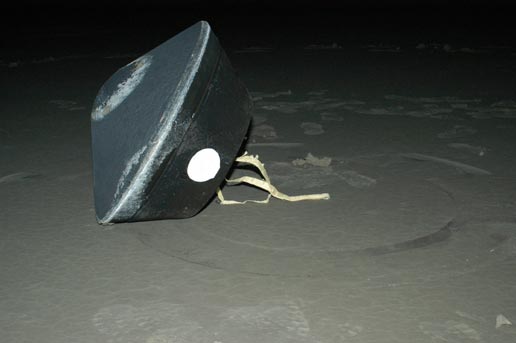
The capsule landed safely in Utah on January 15th, 2006.
After the sample return, the spacecraft went into hibernation in a heliocentric orbit but still had around twenty kilograms of fuel left. In 2007, the spacecraft’s mission was extended and renamed Stardust/NExT, which is a backronym for “New Exploration of Tempel 1”. This new, extended mission would perform a flyby of comet 9P/Tempel 1, nicknamed the Valentine Comet as Stardust was to meet it on February 15th, 2011.
This marked the first time an asteroid had been explored twice as Tempel 1 had already been visited (and crashed into by) Deep Impact in 2005.
Stardust/NExT got as close as 181 kilometers to Tempel 1 and took images to examine the comet and attempt to find Deep Impact’s, well, impact on the comet. While the impact site was observed, it was barely noticeable in the pictures, which was a bit anticlimactic but still gave us a lot of insight into the comet’s composition.
At the time of its operation, it also set the record for “furthest solar-powered spacecraft”, a record which would later be broken by missions like Rosetta and Juno.
On the 24th of March 2011, Stardust conducted its last maneuver to burn the rest of its remaining fuel, which scientists then used to improve their fuel consumption estimation models. The spacecraft then sent its last acknowledgment ping and shut off.

And what about the returned samples from the original mission? Well, after the capsule landed and was recovered, it was opened in the lab, and inside were found at least a million microscopic samples and also around ten samples larger than 100 micrometers (0.1 mm), with the largest measuring around one millimeter.
Data from the mission was analyzed by a citizen science distributed computing project called Stardust@home. Several of these citizen scientists were credited in the scientific papers written using the data.
Some of the more exciting discoveries were the existence of various organic compounds in the samples, traces of liquid water, and glycine, which is a building block of organic life. Finding liquid water was a paradigm-shifting discovery, as comets were thought to never get warm enough to liquefy their water. As one NASA astrobiologist said, it “supports the idea that the fundamental building blocks of life are prevalent in space, and strengthens the argument that life in the universe may be common rather than rare”.
The capsule now resides in the National Air and Space Museum in Washington DC, alongside a sample of the aerogel used in the collection.
To wrap things up, here’s a running tally of a few spaceflight statistics for the current year:
Toilets currently in space: 5 — 3 installed on ISS, 1 on the Crew Dragon, 1 on the Soyuz
Total 2021 orbital launch attempts: 11
Total satellites from launches: 281
I keep track of orbital launches by where they launched from, also known as spaceport. Here’s that breakdown:
USA: 5
China: 4
New Zealand: 1
Russia: 1
Random Space Fact
Your random space fact for the week comes from the Twitter account of the Green Bank Observatory.
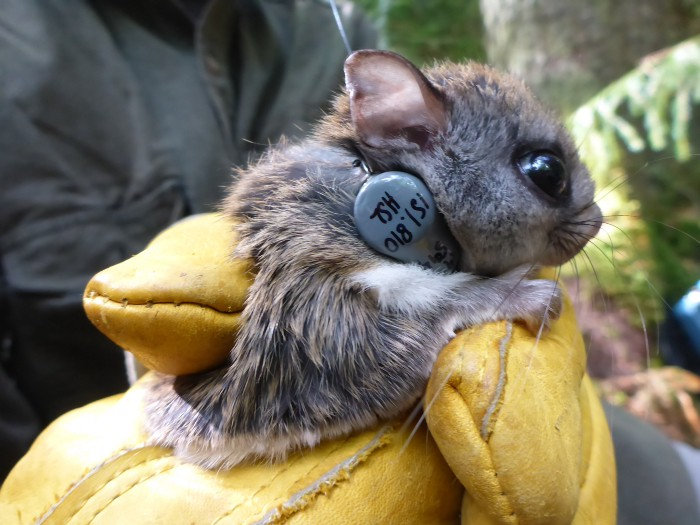
Conservationists needed to do a study on the migration patterns of endangered flying squirrels in the Monongahela National Forest in West Virginia around the radio telescope. This required the use of GPS transmitters to track the animals, which was a bit of a problem because the Green Bank Telescope is very sensitive to radio emissions and is in a Radio Quiet Zone. For the three-month duration of the study, no data could be taken with the telescope due to interference from the transmitters, so instead the team performed needed maintenance.
For now, this has been the Daily Space.
Learn More
SpaceX Launches 18th Batch of Starlink 1.0 Satellites
Surprise Chinese Launch Sends Up TJSW-6 Satellite
Hope and Tianwen-1 Arrive at Mars, Percy Up Next
- CNN article
- BBC article (Hope)
- Spaceflight Now article
- BBC article (Tianwen-1)
This Week in Rocket History: Stardust Mission Launches
Random Space Fact: Green Bank Observatory Shuts Down For Science
- Green Bank Observatory tweet
Credits
Host: Annie Wilson
Writers: Elad Avron, Dave Ballard, Gordon Dewis, Pamela Gay, Beth Johnson, Erik Madaus, Ally Pelphrey, and Annie Wilson
Audio and Video Editing: Ally Pelphrey
Content Editing by Beth Johnson
Executive Producer: Pamela Gay
Intro and Outro music by Kevin MacLeod, https://incompetech.com/music/


 We record most shows live, on Twitch. Follow us today to get alerts when we go live.
We record most shows live, on Twitch. Follow us today to get alerts when we go live.